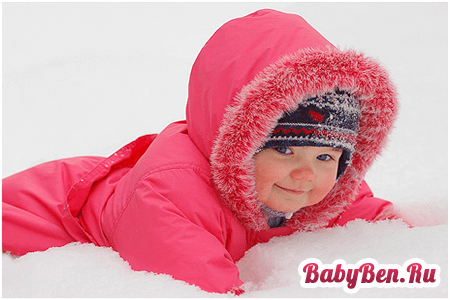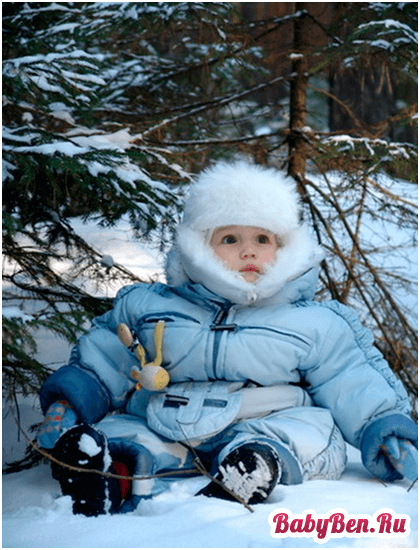
Walking in the fresh air is useful at any time of the year both adults and a defector. But during the winter period, Pope and Moms are more experienced more than for a summer, constantly wondering how to wear a child in winter correctly to prevent overheating, and at the same time so that it does not froze. Let's try to figure it out in this matter.

The content of the article
Weather and clothing: learn how to choose the wardrobe
First of all, it is necessary to see what the weather was "smalked" on the street:
- Warm and raw. The weather is very deceptive. It seems to be warm on the street, but the child's body can get overcooling due to dampness. Clothing should be necessarily multispical. You can wear some more subtle things (golfiki, jumper) than one big weighty sweater. In this case, the air flow will circulate between layers of clothing worse. We must also not forget that in crude weather, the upper clothes must have a water-repellent impregnation, since the body is transferred faster from dampness. Much attention should be paid to the shoes: it should not leak in any case and be high quality.
- Frosty and dry. In this weather it is easier to trace the child (its overheating or supercooling). All parents try to wear a child so that he is not turned on. This is a big mistake. If clothes on the child sits too tightly, he does not move in it. And if the child is constrained in movements, there is a bad blood circulation in the body, the baby is simply transferred. The shoes must necessarily be free and with a protective layer of dirt: in dense shoes, the legs freeze faster. No need to wind your mouth with scarves or scarves, as many moms do. The baby breathes, steam is formed on the scarf, and this is moisture and dampness and she does not leave anywhere, becoming a hotbed for bacteria. Now a lot in pharmacies of drugs, allowing to protect the delicate skin of the child. The simplest is a hygiene lipstick, vaseline oil, children's cream. It is advisable for a walk to take two pairs of mittens for changing wet (if the baby will play with snow).
After a walk, coming home, you can determine how correctly it turned out to wear a child. To do this, shove your hands under the sweater and see the back of the child. If it is wet, then with clothes, parents stopped and the child overheated. Wet clothing should be removed by changing it to dry. And if the child has cold legs, lobik or back - it means that parents underestimated the weather and the baby dressed not enough.

How to dress a newborn baby on a winter walk
For some reason, many people think that the smallest walk in cold weather is harmful, and therefore the question arises when and how to start walking. The first rule - always dress before walking yourself, and only then you should wear a child. The kid should not stand until the parents choose their clothes.
For a walk, newborn needs to wear:
- clean diaper (be sure to change before walking);
- woolen socks (slightly more than size);
- woolen hat (dressed on a homemade cap). The cap should be tightly wrapping the head, it is good to tie and close the ears;
- lower clothes - a jumpsuit (it is more convenient due to the lack of rubber, with such clothes it does not go away and does not roll);
- jumpsuit with good thermal insulation (now they are manufactured on a syntheps or isosoft). Better, of course, that the jumpsuit was on sheepskin, then the woolen dressing under the bottom should not wear, you should give preference to something simpler;
- blanket in a stroller and plaid to cover the baby.

The first walks must be short. If the street is bad weather (strong wind or ice), the child should not remain without fresh air. Roll out the stroller on the closed balcony and ventilate the room. For the first time, the kid can be striking at a temperature of -5 degrees not more than 20 minutes. Then time gradually increases. And remember that the baby is simply needed fresh air to strengthen immunity and future health.
